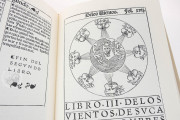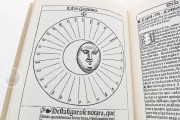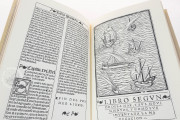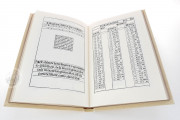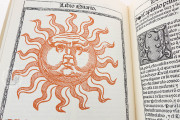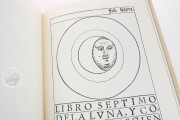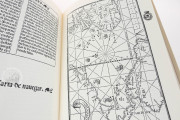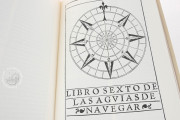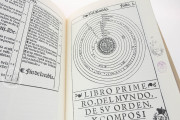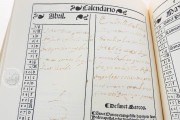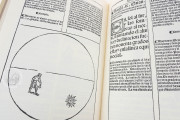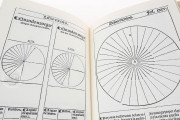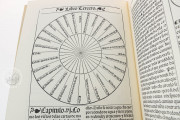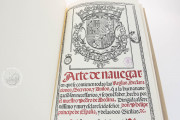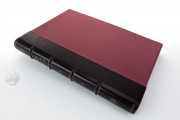The Arte de Navegar by Pedro de Medina was published in 1545 in Valladolid by Francisco Fernández de Córdoba. Dedicated to the future King Philip II of Spain, it is one of the most influential navigation books of sixteenth-century Europe. The Castilian original was translated into French, Dutch, Italian, and English and reissued many times into the seventeenth century. The book features a full-page map of the Atlantic Ocean (fol. 22r), nine large woodcuts, and dozens of smaller woodcut diagrams and initials.
Medina's text is divided into eight books of uneven length that treat the cosmos, the oceans, the winds, the sun, the poles, the compass, the moon, and the days. Tables set in moveable type abound.
Practical Guidance
In his dedication to Prince Philip, Medina emphasizes that his manual of navigation will serve the prince both materially and in spreading his renown. Medina claims that his book will provide the first authoritative practical instruction in navigating both familiar and unfamiliar seas, important for both the safety of sailors and the successful conduct of trade.
Stately Opening to Each Book
Each book opens with a page mostly occupied by a large woodcut image or diagram appropriate to the topic. The first page of Book 2, on the sea, for example, features an image of six sailing ships of various sizes and sorts on the ocean (fol. 11r), and the opening of Book 8, on the days of the year, shows a circular map of the Atlantic Ocean and its adjacent land masses with the sun shining down upon it (fol. 93r). The title of each book is printed in large square capitals.
Two-Color Printing
The title page and the first page of the text's longest section (Book 4) are printed in black and red. The title page features a large representation of the arms of Philip's father, Holy Roman Emperor Charles V, and the book's full title in alternating segments of red and black text. A large red sun with a pudgy face and swirling rays occupies most of the opening page of Book 4 (fol. 35v).
Charts and Tables
Throughout the book, diagrams, charts, and tables convey a wealth of information for determining one's position and for making a variety of calculations. Book 4 includes a Christian liturgical calendar and tables for calculating the date of Easter in a given year.
Navigation as a Science
While Medina's purpose is certainly instructional, he also expects his work to demonstrate that navigation deserves to join the classical disciplines of arithmetic, geometry, and astronomy as a mathematical art. As he writes in his prologue, navigation is worthy of regard for its subtlety, certainty, and utility.
We have 1 facsimile edition of the manuscript "Arte de Navegar": Arte de Navegar facsimile edition, published by Vicent Garcia Editores, 2005
Request Info / Price




